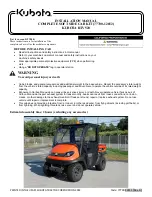
INTRODUCTION
Observe strict fire safety when storing and handling flammable materials or solvents, particularly near electrical equip-
ment or welding processes.
Ensure before using electrical or welding equipment but that there is no fire hazard present.
Have suitable fire extinguisher available when using welding or heating equipment.
First aid
Apart from meeting any legal requirements its i desirable for someone in the workshop to be trained in first aid proce-
dures.
Splashes in the eye should be flushed with clean water for at least
10 min
.
Soiled skin should be washed with soap and water.
Inhalation affected individuals should be removed to fresh air immediately.
If swallowed or if effects persist consult a doctor with information (label) on material used.
Do not induce vomiting (unless indicated by manufacturer).
Foams
See fire.
Used in sound and noise insulation. Cured foams used in seat and trim cushioning.
Follow manufacturers’ instructions.
Un reacted components are irritating and may be harmful to the skin and eyes. Wear gloves and goggles.
Individuals with chronic respiratory diseases, asthma, bronchial medical problems or histories of allergic diseases
should not work with or near uncured materials.
The components, vapors, spray mists can cause direct irritation, sensitivity reactions and may be toxic or harmful.
vapors and spray mists must not be breathed. These materials must be applied with adequate ventilation and respi-
ratory protection. Do not remove respirator immediately after spraying, wait until vapor / mists have cleared.
Burning of the uncured components and the cured foams can generate toxic and harmful fumes.
Smoking, open flames or the use of electrical equipment during foaming operations and until vapors/mists have
cleared should not be allowed. Any heat cutting of cured foams or partially cured foams should be conducted with
extraction ventilation.
Fuels
See fire, legal aspects, chemicals - general, solvents.
Used as fuels and cleaning agents.
Gasoline (petrol)
Highly flammable.
Swallowing can result in mouth and throat irritation and absorption from the stomach can result in drowsiness and
unconsciousness. Small amounts can be fatal to children. Aspiration of liquid into the lungs, e.g. through vomiting,
is a very serious hazard.
Gasoline dries the skin and can cause irritation and dermatitis on prolonged or repeated contact. Liquid in the eye
causes severe smarting.
Motor gasoline may contain appreciable quantities of benzene, which is toxic upon inhalation and the concentrations
of gasoline vapors must be kept very low. High concentrations will cause eye, nose and throat irritation, nausea,
headache, depression and symptoms of drunkenness. Very high concentrations will result in rapid loss of conscious-
ness.
47866580 11/12/2015
11
Summary of Contents for TT4.80
Page 2: ...SERVICE MANUAL TT4 80 TT4 90 47866580 11 12 2015 EN Find manuals at https best manuals com ...
Page 6: ...INTRODUCTION 47866580 11 12 2015 1 Find manuals at https best manuals com ...
Page 22: ...SERVICE MANUAL Engine TT4 80 TT4 90 47866580 11 12 2015 10 ...
Page 24: ...Engine 10 Engine and crankcase 001 TT4 80 TT4 90 47866580 11 12 2015 10 1 10 001 1 ...
Page 41: ...This as a preview PDF file from best manuals com Download full PDF manual at best manuals com ...
















































